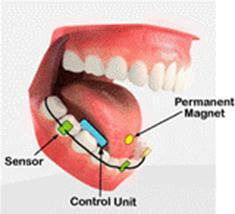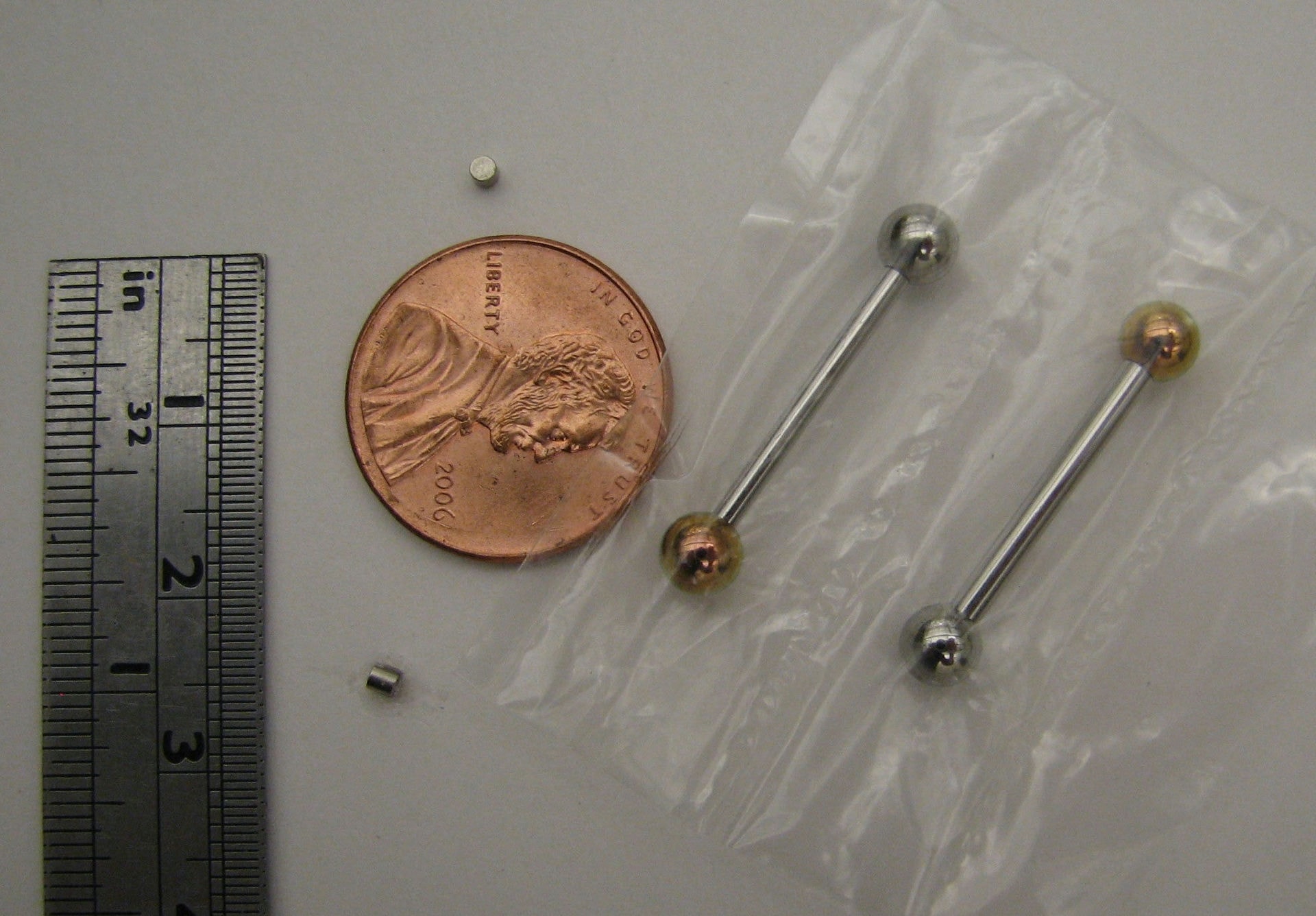In past a retainer could be defined as a piece of plastic and metal custom-made for each individual

Internal Tongue Drive System (iTDS) consists of a permanent magnet attached to the tongue, plus an array of magnetic sensors around the lower teeth on a dental retainer.
child in order to correct a variety of problems.
Today, an experimental device is letting paralyzed people drive wheelchairs with the help of a dental retainer and a tongue piercing with a magnetic tongue stud.
In 2009, Georgia Institute of Technology electrical engineers began clinical tests on a dental retainer that people with spinal cord injuries can manipulate with their tongue to maneuver an electric wheelchair.
The Tongue Drive System lets users wear a dental retainer embedded with sensors that track the location of a tiny magnet attached to the tongues of users. This is achieved by giving participants a “clinical” tongue piercing and tongue stud containing a tiny magnet embedded in the upper ball, according to wired.co.uk

The Tongue Drive System uses ordinary tongue studs that are embedded with permanent magnets that are less than 5mm in diameter.
“Having a technology that is completely hidden from sight — that’s a huge advantage,” Maysam Ghovanloo, the Georgia Tech biomedical engineer leading the development of the Tongue Drive System told usatoday.com
He said he expects the tongue-driven device to eventually cost between $6,000 and $8,000 — three to four times the cost of a sip-and-puff system, through which a wheelchair responds to four commands delivered with its driver’s breath.
Now if only researchers could embed a tracking device into the retainers of middle schoolers everywhere to avoid the inevitable cafeteria trash can search.

